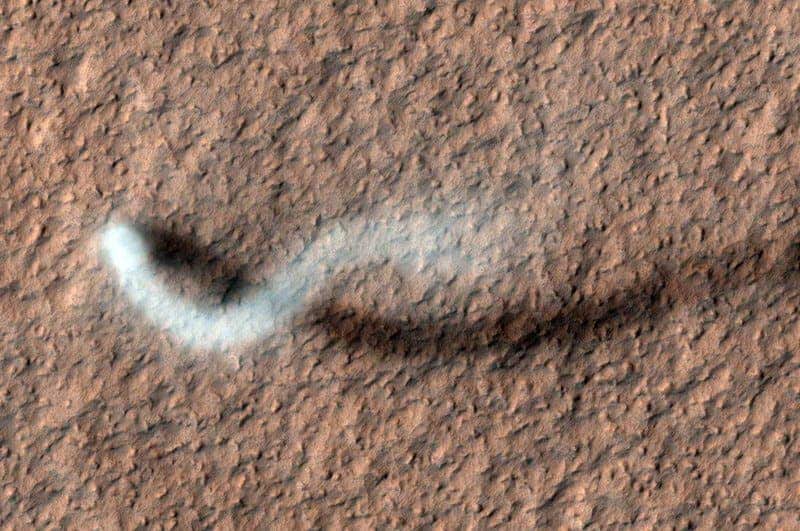
When the rover Perseverance landed on Mars, it was the first rover or probe on the planet’s surface to have a working microphone. In October of 2021, NASA gave us our first sounds of the Red Planet. Now scientists have used the rover’s mic to record the first-ever sound of a whirlwind on another world.
“We can learn a lot more using sound than we can with some of the other tools,” said Roger Wiens, professor in the College of Science at Purdue University’s School of Earth, Atmospheric and Planetary Sciences, who leads the instrument team that made the discovery. “They take readings at regular intervals. The microphone lets us sample, not quite at the speed of sound, but nearly 100,000 times a second. It helps us get a stronger sense of what Mars is like.”
The microphone is one of the many instruments that comprise Perseverance’s SuperCam, the “head” of the rover. Other instruments there include advanced remote-sensing instruments and cameras.
The microphone records about three minutes every few days and Wiens said that getting the whirlwind recording was lucky, but it wasn’t entirely out of the blue. Since Perseverance landed in the Jezero Crater, the team has seen signs of nearly 100 dust devils, tiny tornadoes made of dust and sand.
Together with air pressure readings and time-lapse photos, the sound recording of the dust devil helps scientists learn more about the atmosphere and weather on Mars.
“We could watch the pressure drop, listen to the wind, then have a little bit of silence that is the eye of the tiny storm, and then hear the wind again and watch the pressure rise,” Wiens said.
The wind blows approximately 25 miles per hour, comparable to a dust devil on Earth. However, air pressure on Mars is much lower than on Earth. Although the winds are just as fast, they only push about 1% of the force that the same wind speed would have here.
This information shows that future astronauts won’t really have to worry about strong winds taking down antennas or habitats. Instead, it will be beneficial, especially for the rovers. Dust devils may have helped others, like Opportunity and Spirit, last so much longer because the winds essentially cleaned their solar panels.
“Those rover teams would see a slow decline in power over a number of days to weeks, then a jump. That was when wind cleared off the solar panels,” Wiens said.
This is apparent on Elysium Planitia where the InSight mission landed in 2018. The fact that there aren’t any wind and dust devils there may be a clue as to why that mission is coming to an end.
“Just like Earth, there is different weather in different areas on Mars,” Wiens said. “Using all of our instruments and tools, especially the microphone, helps us get a concrete sense of what it would be like to be on Mars.”
The study was published in Nature Communications.


